Not St. Paddy’s Day (yet) but let’s have a look at “Green Beer” – 1

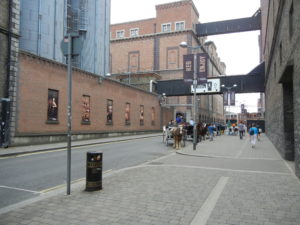 Several summers ago, a memorable family trip to find ancestral roots in Ireland, among objectives, was had.
Several summers ago, a memorable family trip to find ancestral roots in Ireland, among objectives, was had.
During our stay in Dublin, we 5 toured the Guinness St. James Gate Storehouse and, of course, found time to drink a free pint there too.
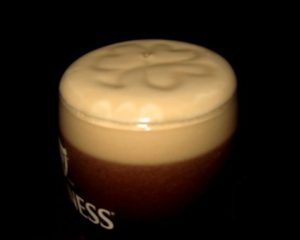 Towards the end of the tour, the women wound up in one Storehouse cafe while my son and I took in a panorama of the city from the top-floor glass-walled Gravity Bar when not taking a gulp through the foam.
Towards the end of the tour, the women wound up in one Storehouse cafe while my son and I took in a panorama of the city from the top-floor glass-walled Gravity Bar when not taking a gulp through the foam.
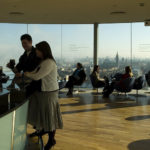
I wrote about Guinness briefly awhile back. What brings it to mind again is a piece appearing in the Nov/Dec issue of the USGBC (U.S. Green Building Council) magazine about the company (founded 1759) and upstart competitor Sierra Nevada Brewing Co. (founded in 1980 in Chico, CA). Both companies have new LEED® Platinum certified brewing facilities!
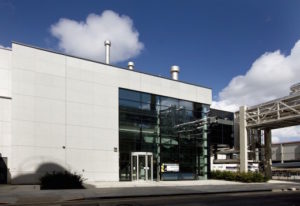 First, let’s look at Guinness’s Storehouse No. 4–built on a reclaimed brownfield site–recipient of the Platinum certification in 2015 after opening the year before. (Diageo became Guinness’s parent company in 1997.)
First, let’s look at Guinness’s Storehouse No. 4–built on a reclaimed brownfield site–recipient of the Platinum certification in 2015 after opening the year before. (Diageo became Guinness’s parent company in 1997.)
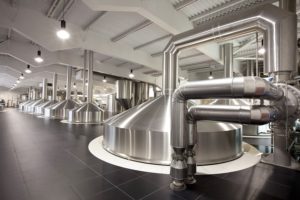 Sustainability goals were embraced by Diageo back in 2008. Michael Wilson, global environmental sustainability director, is quoted in the USGBC piece by Calvin Hennick: “Climate change was becoming more and more of a prevalent issue, and there was more media attention, and I think that was a driving force. Other large-scale multinational companies were beginning to play their part as well.”
Sustainability goals were embraced by Diageo back in 2008. Michael Wilson, global environmental sustainability director, is quoted in the USGBC piece by Calvin Hennick: “Climate change was becoming more and more of a prevalent issue, and there was more media attention, and I think that was a driving force. Other large-scale multinational companies were beginning to play their part as well.”
“It’s not a short-term agenda. This is something we see continuing for an extended period. We’re not immune to climate change. We believe that we actually have a role to play in obviating the risks around climate change.”
And, importantly: “Looking forward, the consumer of the future will be much more in tune with brands and products that demonstrate responsibility toward the environment.” (I’ve written about such companies, typically under the title Greenwash or Raw Milk if you want to search for those posts.)
So what’s cool, and sustainable, about Store House No. 4? At website Jetson Green: “The most notable sustainable features…are an energy recovery system, which works to reduce the need for steam heating, and a hybrid refrigeration system which runs at 32 ºF instead of 25 ºF (0 ºC instead of -4 ºC) as was the case with the previous one. They also optimized the structure’s orientation, took advantage of solar shading and used high-performance insulation. The lighting is automatic and highly-efficient.”
That the electrical power required comes from a combined heat and power plant (CHP), thermal energy consumption has been reduced by 33%. Air conditioning is used only in spaces where regular human occupancy or certain mechanical function require it. Of course low-flow plumbing fixtures have been installed.
In the overall, water use attributable to brewing has been reduced by 14%. Similar to what I wrote in the preceding post about Colgate-Palmolive’s drive toward water stewardship, Diageo aims to return 100% of wastewater to the environment safely, and to replenish its water used for products made in water-stressed areas by 2020. Laudable!
Storehouse No. 4 is now a carbon-neutral building. Net zero waste went to a landfill during construction as is the case during ops.

Be sure to see the conclusion of this “Green Beer” post next week at about this time. We’ll come back to the USA to talk in a bit of detail about Sierra Nevada Brewing Company’s newest facility.